“Microlearning” is a huge buzz word in learning and development (L&D) these days. It seems like everyone is doing it or wants to be doing it. The problem is, people often have a hard time defining just what “it” is. In addition, there’s even less certainty around how to use microlearning to make the most positive difference for your organization.
The good news is that microlearning can be a powerful tool in the L&D organization’s toolbox. It just needs to be used in the right ways. In upcoming articles, we’ll spend some time covering different facets of microlearning. In this “micro” article, though, we’re going to start building the foundation by providing a standard definition of microlearning.
Definition of Microlearning
To cut right to the chase, “microlearning” simply refers to a piece of educational content that can be consumed quickly. In many ways, microlearning is just a mash-up of lots of things we’ve been doing in the past: just-in-time learning, performance support, and many others. But, it’s presented in a short form.
Microlearning content can stand alone or support other learning activities (like instructor-led classes, eLearning modules, simulations, etc.). It can be used as:
- Preparation before a learning event
- Follow-up to support a learning event
- Stand-alone training
- Performance support
Those options pretty much cover any time someone could be learning. If you teach something—or augment other teaching to enhance retention with short-form content—you are “going micro”.
What’s Coming Next?
In our next article, we’ll answer a common question: How “micro” does microlearning need to be? After that article, we’ll explore how microlearning can be applied as preparation before a learning event, follow-up after an event, stand-alone training, and as performance support.

.jpg)
